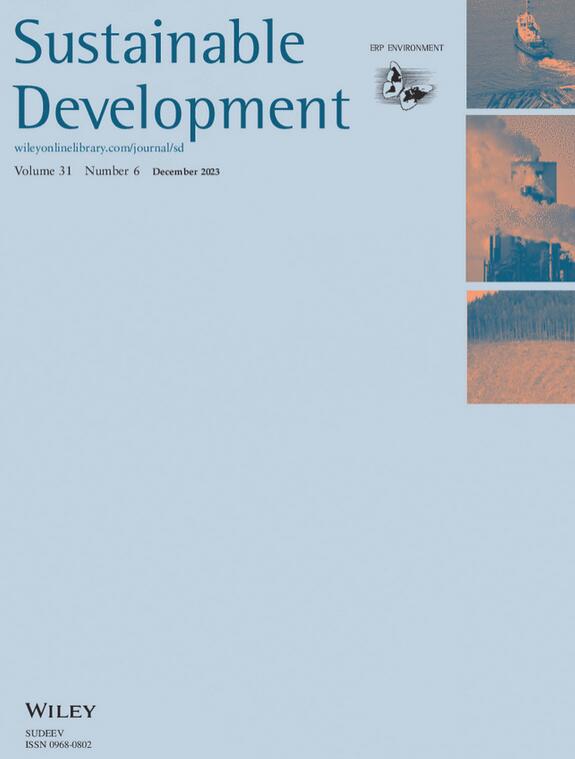Analysis of the water‐energy‐carbon nexus for sustainable development of the selected industries
IF 9.9
1区 环境科学与生态学
Q1 DEVELOPMENT STUDIES
引用次数: 0
Abstract
Industries consume 20% and 50% of global water and energy, contributing 25% of total greenhouse gas emissions. They strive to become more efficient in water and energy usage and reduce carbon emissions. This study analyzed water, energy, and carbon footprints of five manufacturing industries—automobile, cement, chemical, pulp and paper, and steel. Multi‐linear regression was used to analyze the relationship between production, water use, energy use, and carbon emission. The study also explored the potential to reduce carbon emissions by reducing water and energy usage. Among the selected industries, pulp and paper, and steel industries have higher water, energy, and carbon footprints. On average, it takes 5.58 m3 of water and 17.11 GJ of energy to produce a ton of paper, and 4.03 m3 of water and 19.52 GJ of energy to produce a ton of steel. The analysis also shows that water and energy use are closely related to production in all industries. Carbon emission is closely related to the production processes in cement, pulp and paper, and steel, and to reduce the emissions, both water and energy usage have to be reduced. The automobile industry has the highest potential to reduce carbon emissions by reducing water and energy uses, followed by steel and cement industries. By reducing 3% of their water and energy uses, automobile and steel industries, on average, have the potential to reduce 11% and 2.6% of their carbon emissions, respectively. The study explored the existing policies and recommendations for industries to achieve sustainable development goals.分析水-能源-碳之间的关系,促进选定行业的可持续发展
工业消耗了全球 20% 和 50% 的水和能源,占温室气体排放总量的 25%。他们努力提高水和能源使用效率,减少碳排放。本研究分析了五个制造业--汽车、水泥、化工、纸浆和造纸以及钢铁--的水、能源和碳足迹。采用多线性回归分析了生产、用水、用能和碳排放之间的关系。研究还探讨了通过减少用水和能源使用来减少碳排放的潜力。在选定的行业中,纸浆和造纸以及钢铁行业的水、能源和碳足迹较高。平均而言,生产一吨纸需要 5.58 立方米的水和 17.11 千兆焦耳的能源,生产一吨钢需要 4.03 立方米的水和 19.52 千兆焦耳的能源。分析还表明,水和能源的使用与所有行业的生产密切相关。碳排放与水泥、纸浆和造纸以及钢铁的生产过程密切相关,要减少碳排放,就必须减少水和能源的使用。汽车行业通过减少水和能源的使用来减少碳排放的潜力最大,其次是钢铁和水泥行业。通过减少 3% 的水和能源使用量,汽车和钢铁行业平均可分别减少 11% 和 2.6% 的碳排放量。该研究探讨了工业实现可持续发展目标的现有政策和建议。
本文章由计算机程序翻译,如有差异,请以英文原文为准。
求助全文
约1分钟内获得全文
求助全文
来源期刊

Sustainable Development
Multiple-
CiteScore
17.30
自引率
11.20%
发文量
168
期刊介绍:
Sustainable Development is a publication that takes an interdisciplinary approach to explore and propose strategies for achieving sustainable development. Our aim is to discuss and address the challenges associated with sustainable development and the Sustainable Development Goals. All submissions are subjected to a thorough review process to ensure that our readers receive valuable and original content of the highest caliber.
 求助内容:
求助内容: 应助结果提醒方式:
应助结果提醒方式:


